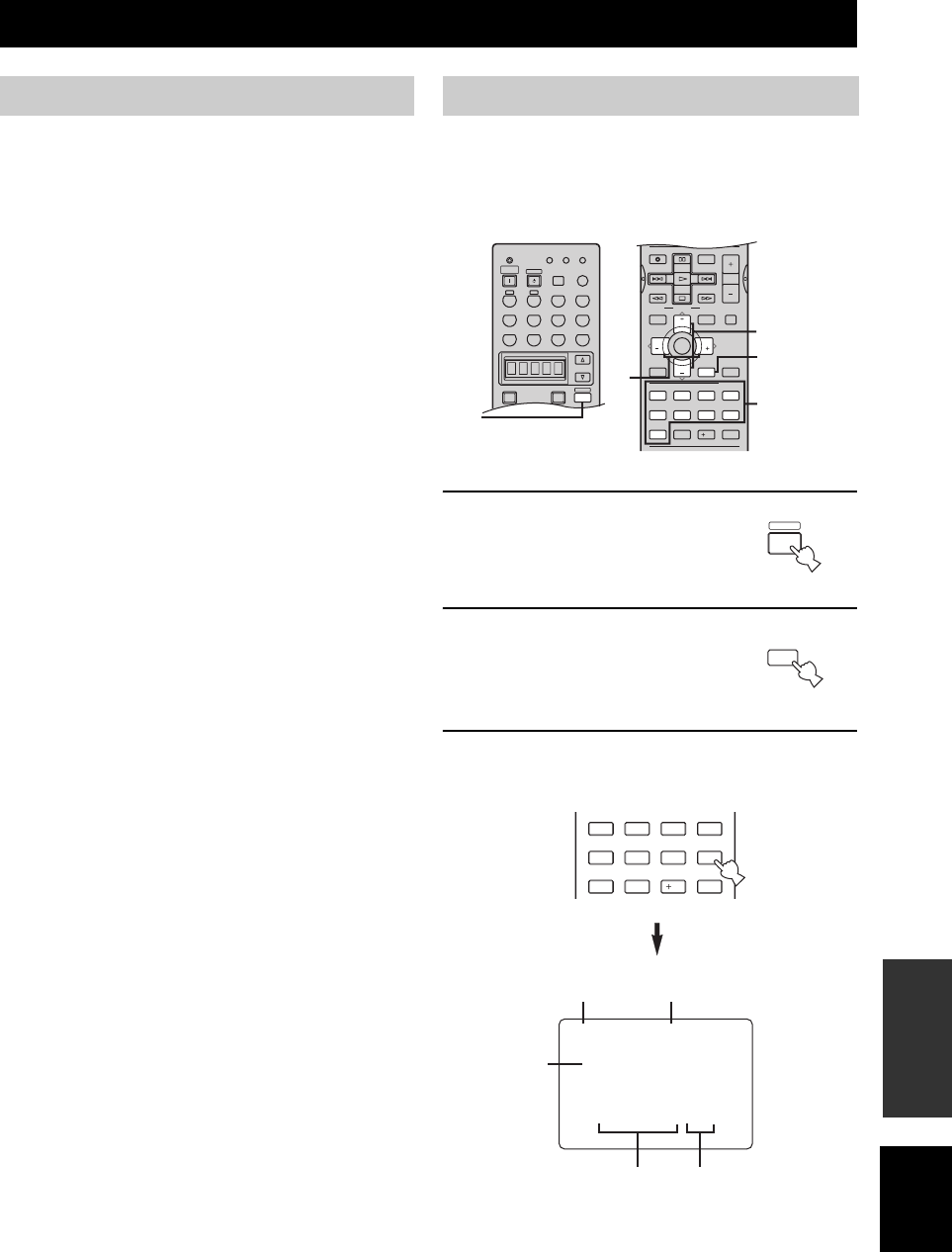
EDITING SOUND FIELD PARAMETERS
73
English
ADDITIONAL
INFORMATION
What really creates the rich, full tones of a live instrument
are the multiple reflections from the walls of the room. In
addition to making the sound “live”, these reflections
enable us to tell where the player is situated, and the size
and shape of the room in which we are sitting.
■ Elements of a sound field
In any environment, in addition to the direct sound coming
straight to our ears from the player’s instrument, there are
two distinct types of sound reflections that combine to
make up the sound field:
Early reflections
Reflected sounds reach our ears extremely rapidly (50 ms
– 100 ms after the direct sound), after reflecting from one
surface only — for example, from the ceiling or a wall.
Early reflections actually add clarity to the direct sound.
Reverberations
These are caused by reflections from more than one
surface — walls, ceiling, the back of the room — so
numerous that they merge together to form a continuous
sonic “afterglow”. They are non-directional, and lessen
the clarity of the direct sound.
Direct sound, early reflections and subsequent
reverberation taken together help us to determine the
subjective size and shape of the room, and it is this
information that the digital sound field processor
reproduces in order to create sound fields.
If you could create the appropriate early reflections and
subsequent reverberations in your listening room, you
would be able to create your own listening environment.
The acoustics in your room could be changed to those of a
concert hall, a dance floor, or virtually any size room at
all. This ability to create sound fields at will is exactly
what YAMAHA has done with the digital sound field
processor.
You can enjoy good quality sound with the factory preset
parameters. Although you do not have to change the initial
settings, you can change some of the parameters to better
suit the input source or your listening room.
1 Press AMP.
2 Turn on the video monitor and
press ON SCREEN repeatedly
to select the full display
mode.
3 Select the sound field program you want to
adjust.
EDITING SOUND FIELD PARAMETERS
What is a sound field Changing parameter settings
TRANSMIT
RE-NAME
INPUT MODE
STANDBY
SYSTEM
POWER
AB
PHONO
CDMD/CD-RTUNERV-A UX
DVD
AMP
POWERPOWER
REC
AVTV
SELECT
VCR 1DTV/CBL DVR/VCR2
MULTI CH IN
SLEEP
CLEAR LEARN
REC
AUDIO
MUTE
MENUTITLE
CH CH
VOL
DISC SKIP
FREQ/RDS EON
START
SET MENU
LEVEL
A/B/C/D/E
TV INPUT
MODE
PTY SEEK
TV VOL
PRESET
TEST
ON SCREEN
STRAIGHT
ROCKJAZZHALLSTEREO
4321
8
10
7
09
65
ENTER
MOVIETV THTRMUSIC ENTERTAIN
EX/ES
NIGHTq/DTS
PURE DIRECT
EFFECT
CHP/INDEX
DISPLAYRETURN
PRESET
TV MUTE
SELECT
TV VOL
AVTV
2
4
5
3
1
AMP
ON SCREEN
DISPLAY
ROCKJAZZHALLSTEREO
4321
8
10
7
09
65
ENTER
MOVIETV THTRMUSIC ENTERTAIN
EX/ES
NIGHTq/DTS
PURE DIRECT
CHP/INDEX
P08
MOVIE THEATER
.General
DSPLEVEL;;;;0dB
P.INIT.DLY;;15ms
P.ROOMSIZE;;1.0
S.INIT.DLY;;20ms
S.ROOMSIZE;;1.0
Program No. Program name
Parameters Parameter values
Cursor
01EN_00_RXV750_GB.book Page 73 Friday, March 5, 2004 11:40 AM


















